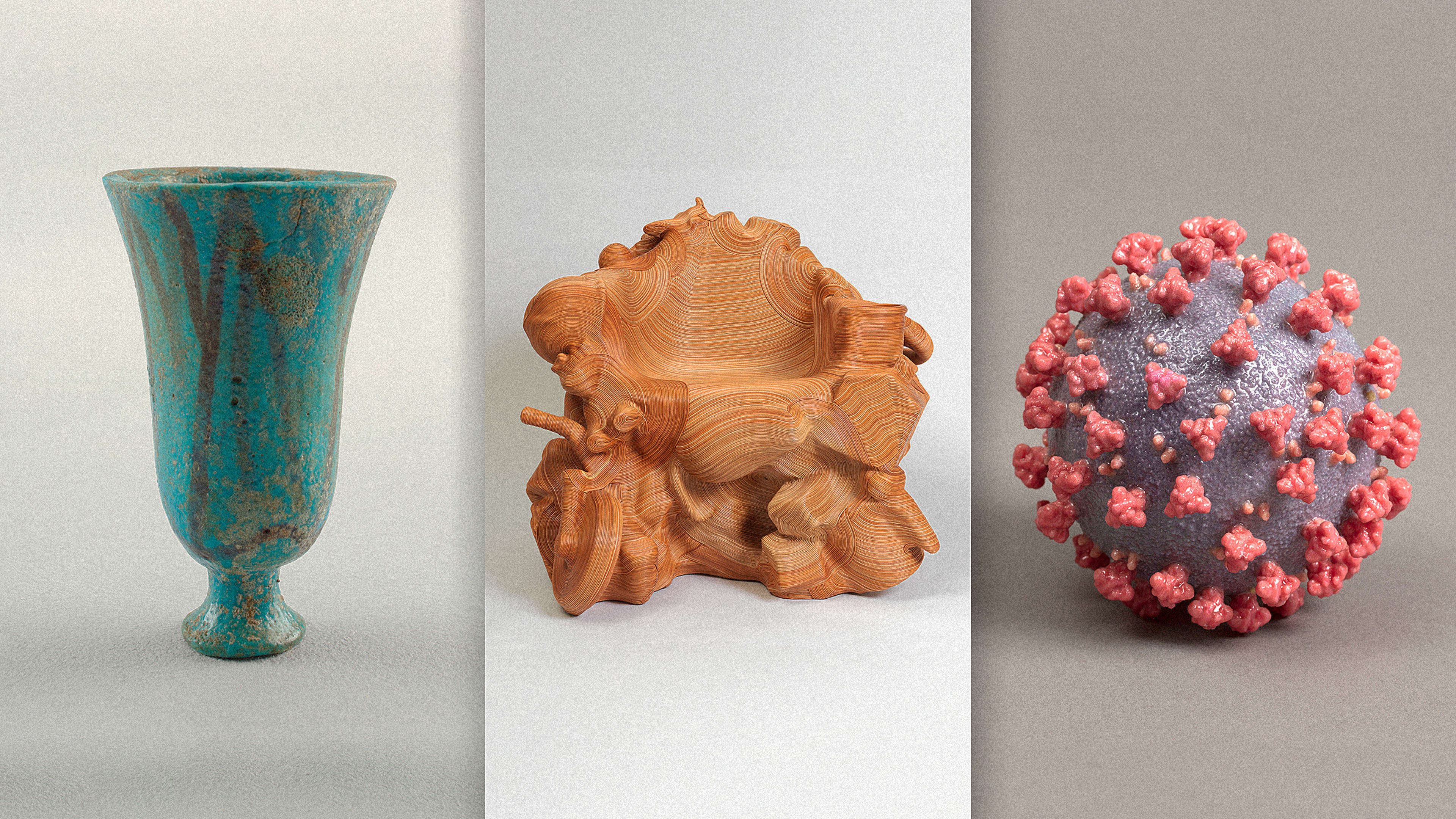At the entrance of the Cooper Hewitt design museum’s latest exhibition, Acquired! Shaping the National Design Collection, two objects sit side-by-side. One is a 3D-printed model of a coronavirus particle, 2020; the other is a turquoise lotus-shaped cup, circa 1100 BCE, from Egypt—the oldest object in the museum’s collection.

“It brings together two things that are separated by centuries and centuries of history,” says Maria Nicanor, director of the Cooper Hewitt, Smithsonian Design Museum, in New York, and one of the exhibition’s lead organizers. “You imagine everything that has happened in between one and the other, but also what unites them. Both of them are design—both of them have had a meaning to a culture and a functionality, and both have helped you understand a particular moment in history.”

As the country’s only museum dedicated exclusively to historical and contemporary design, the Cooper Hewitt has been curating objects that reflect the current moment for the past 127 years. Acquired! features more than 150 works added to the museum’s permanent collection since 2017, highlighting how curators currently view the design world—and how those views have changed over time.

According to Nicanor, the museum’s early years were heavily focused on design from a decorative point of view: Its four original departments were textiles, wall coverings, prints and graphic design, and product design and decorative arts. While those categories remain relevant, the definition of design doesn’t have to be rigid, Nicanor explains.
“I am interested in a very expansive definition of design that takes into account aesthetics and functionality, but also systems,” she says. “For me, I’m as interested in an 18th century teacup as I am in highway infrastructure for the whole entire country—both things are designed.”

Nicanor’s inclusive definition highlights how design is made for and by everyone, not just the ultra-wealthy. One major theme of the Acquired! exhibition is a transition away from the decorative perspective of 19th century curators—which would have primarily included objects that were inaccessible to the middle and lower classes—and toward a perspective that sees design in everyday objects. “If you think about it, from the moment that you wake up to the moment that you go to bed, you’ve been touched by a series of design systems, none of which are neutral, and all of which have affected your day and have made you feel better or worse,” she says.

Another goal of Acquired! is to look “at details that were perhaps ignored by history, and then [reinterpret] them,” says Nicanor, which also means reexamining the museum’s own curation practices. Since 2017, Cooper Hewitt has acquired works including a series of posters by Jésus Ruiz Durand on the agrarian reform movement in Peru, Faith Ringgold’s 1971 Black feminist poster, and a contemporary police body camera that reflects calls for police reform during the Black Lives Matter movement. These examples demonstrate how design often cannot be divorced from activism and politics.

“We talk a lot about activism and labor practices, we talk about new materials and sustainability, we talk about the impact of design on climate change,” says.

A new definition of design
While Cooper Hewitt has retained its original four departments, the disciplines that fit within each have grown significantly, with some new objects not fitting so neatly at all. In March 2023, the museum added an entirely new section to its holdings: the digital department. Curators have been hard at work acquiring everything from articles and websites to emojis and apps.
One powerful digital acquisition is a video called The Substitute. The work depicts a white rhinoceros whose real-life counterpart, Sudan, was the last male northern white rhino, and he died in 2018—bringing his subspecies to the brink of extinction. As computer-generated Sudan paces around his sterile white room, growling and grunting, he slowly becomes more and more pixelated. At the end, he’s an unrecognizable glitching mass of brown squares. The work is a heart-wrenching exploration of animal extinction that interrogates the human role in the loss of the species as well as the scientists who are currently attempting to “resurrect” the white rhino.
For Nicanor, pieces like The Substitute help to dispel the idea that design is merely an aesthetic exercise. That theme serves as a through line across Acquired!, helping visitors derive deeper meaning from beautiful images and objects.
“There’s definitely an interest in artistry and craftsmanship and the aesthetic value of [design],” says Nicanor. “But more and more, there are other beliefs and stories that are behind these objects which are more important for the way that we think right now.”
Recognize your brand’s excellence by applying to this year’s Brands That Matter Awards before the final deadline, June 7.
Sign up for Brands That Matter notifications here.
